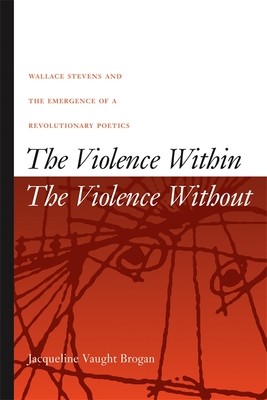
- We will send in 10–14 business days.
- Author: Jacqueline Vaught Brogan
- Publisher: University of Georgia Press
- ISBN-10: 0820325198
- ISBN-13: 9780820325194
- Format: 15.2 x 24 x 2.2 cm, kieti viršeliai
- Language: English
- SAVE -10% with code: EXTRA
The Violence Within/The Violence Without (e-book) (used book) | bookbook.eu
Reviews
Description
Wallace Stevens (1879-1955), one of the leading poets of the twentieth century, continues to influence a wide range of poets writing today. However, an image persists of Stevens as an aesthete who was politically removed from his times and who also exhibited sexist and racist tendencies. Jacqueline Vaught Brogan offers careful readings from across the Stevens canon to demonstrate that, contrary to such enduring earlier assessments, Stevens's work over the years shows poetic and political changes that merge with his growing ethical concerns.
Brogan traces Stevens's evolving poetic practices along three major lines that often intersected. She situates the beginnings of Stevens's development within his early resistance to the pressures of "reality" on the imagination, an artistic stand that pitted him against the "objective" poetry exemplified in the work of William Carlos Williams. Then, in the midst of Stevens's career, World War II moved him forward with new poetic responsibilities both to witness the current world and to guide readers into their future. The emergence of an almost feminist vision defines Stevens's third line of development. Finally, in addition to identifying these developmental stages, Brogan addresses the undercurrent of race throughout Stevens's work. According to Brogan, Stevens not only changed but matured over time. What began as an aesthetic "violence within," or a girding against such "violence without" as social unrest and war, rapidly evolved during Stevens's middle years into a set of perceptions and practices increasingly responsive to his times.EXTRA 10 % discount with code: EXTRA
The promotion ends in 21d.19:14:58
The discount code is valid when purchasing from 10 €. Discounts do not stack.
- Author: Jacqueline Vaught Brogan
- Publisher: University of Georgia Press
- ISBN-10: 0820325198
- ISBN-13: 9780820325194
- Format: 15.2 x 24 x 2.2 cm, kieti viršeliai
- Language: English English
Wallace Stevens (1879-1955), one of the leading poets of the twentieth century, continues to influence a wide range of poets writing today. However, an image persists of Stevens as an aesthete who was politically removed from his times and who also exhibited sexist and racist tendencies. Jacqueline Vaught Brogan offers careful readings from across the Stevens canon to demonstrate that, contrary to such enduring earlier assessments, Stevens's work over the years shows poetic and political changes that merge with his growing ethical concerns.
Brogan traces Stevens's evolving poetic practices along three major lines that often intersected. She situates the beginnings of Stevens's development within his early resistance to the pressures of "reality" on the imagination, an artistic stand that pitted him against the "objective" poetry exemplified in the work of William Carlos Williams. Then, in the midst of Stevens's career, World War II moved him forward with new poetic responsibilities both to witness the current world and to guide readers into their future. The emergence of an almost feminist vision defines Stevens's third line of development. Finally, in addition to identifying these developmental stages, Brogan addresses the undercurrent of race throughout Stevens's work. According to Brogan, Stevens not only changed but matured over time. What began as an aesthetic "violence within," or a girding against such "violence without" as social unrest and war, rapidly evolved during Stevens's middle years into a set of perceptions and practices increasingly responsive to his times.

Reviews